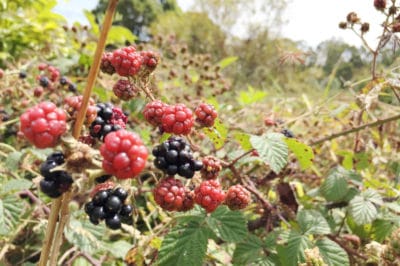What Method Is Best for Killing Blackberry Bushes Organically?
For the best chance of success in getting rid of blackberry bushes organically, practice a four-pronged approach: pruning, tilling, digging and mulching. To complete the job, you’ll need:
- Tarps to cover the soil around the bushes
- Clean, sharp hand pruners and branch loppers
- Shovel
- Trowel
- Yard waste bags
- Wood chips or other organic mulch
- Adjustable-handle rotary tiller
Expert gardener’s tip: Some experts recommend treating invasive blackberries with herbicides such as glyphosate, triclopyr or tebuthiuron. By focusing on organic methods, you’ll keep your other crops safe for consumption and your soil and water supply free of harmful chemicals.
To allow for easy thorn spotting, tackle the bushes in early spring, before they leaf out or bloom. Dress defensively with long-sleeves, long pants, heavy-duty gloves, sturdy closed-toe shoes and eye protection.
Step 1: Pruning
Spread tarps beneath the bushes to catch the pruned material for easy disposal. Prune from the outside in, using the branch loppers on thick or very long canes. Cut everything back to ground level. Bundle the pruned canes in the tarps and empty the tarps into yard waste disposal bags.
Step 2: Digging and Lifting
Wait for rain or wet the soil around the bushes to soften it. Use the shovel to dig around each pruned bush until its entire roots system is exposed. Because blackberries’ underground rhizomes spread horizontally, you’ll have to follow each one to its end.
Loosen the rhizomes with a trowel until you can lift the bushes without too much resistance. Dispose of them in yard waste bags.
Step 3: Mulching
Mulch the cleared area with an 8- to 10-inch layer of wood chips or other organic material. It blocks sunlight from reaching seeds or root fragments left in the soil so they’re less likely to sprout.
Step 4: Tilling
If sprouts do manage to penetrate the mulch, till them under so their sunlight-deprived roots will eventually die. Because tilling may scatter some root fragments through the soil, this step is one you may have to repeat for two or three years.
Expert gardener’s tip: If you’re battling several bushes over a large area, treat yourself to an adjustable-handle rotary tiller. Your back will thank you for it!
